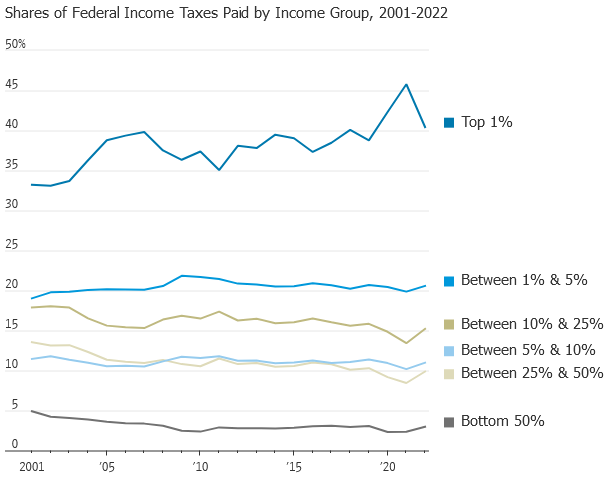Steve Forbes, Chairman and Editor-in-Chief of Forbes Media, and Stephen Moore, a Heritage Foundation economist, proposed last Monday.
Collapsing the personal-income and corporate tax rates to 15% would have huge economic benefits. America would suddenly have one of the lowest tax rates in the world, resulting in trillions of dollars of new capital flow and a spike in take-home pay.
And this:
The simplicity of a flat tax would reduce the deadweight costs associated with tax compliance—and the headaches. The White House Office of Information and Regulatory Affairs calculates that Americans spent almost eight billion hours filling out tax forms in 2024.
Using a naïve estimate of 97.2 million households (and even more naively assuming all households pay taxes, which provides an upper bound on the number of households relevant here), that works out to over 80 hours per household—two working weeks—of tax compliance labor.
This, too:
The Tax Foundation estimates that this cost the economy $413 billion in lost productivity, and the Internal Revenue Service estimates that we spent $133 billion on out-of-pocket compliance costs.
That’s $4,250 per year in lost productivity for each household, with an added $1,370 per year per household of unreimbursed spending just to comply with current tax law. Most households could find other uses for those $5,620.
Still, I don’t think Forbes and Moore go far enough.
I’d add getting rid of the corporate income tax altogether. Business’ customers pay the bulk of those taxes, anyway, rather than the taxed business; for the taxed business, the tax is just another cost center to be covered proximately through product/service pricing and indirectly through reduced spending on innovation, expansion, hiring, and raises.
Forbes and Moore suggest getting rid of some deductions, but I’d go farther here, too. Get rid of all deductions, subsidies, and credits, too, and tax all income from all sources as ordinary income. Let businesses make their expansion and financing decisions based on purely business and market criteria instead of having to game the tax implications of borrowing or stock issuances. Individuals also would go back to making their spending and investing decisions based on what’s good for their individual/family situations instead of having to game a byzantine tax system in the course of their decisions.
And those optimal decisions would include how to use those $5,620.

